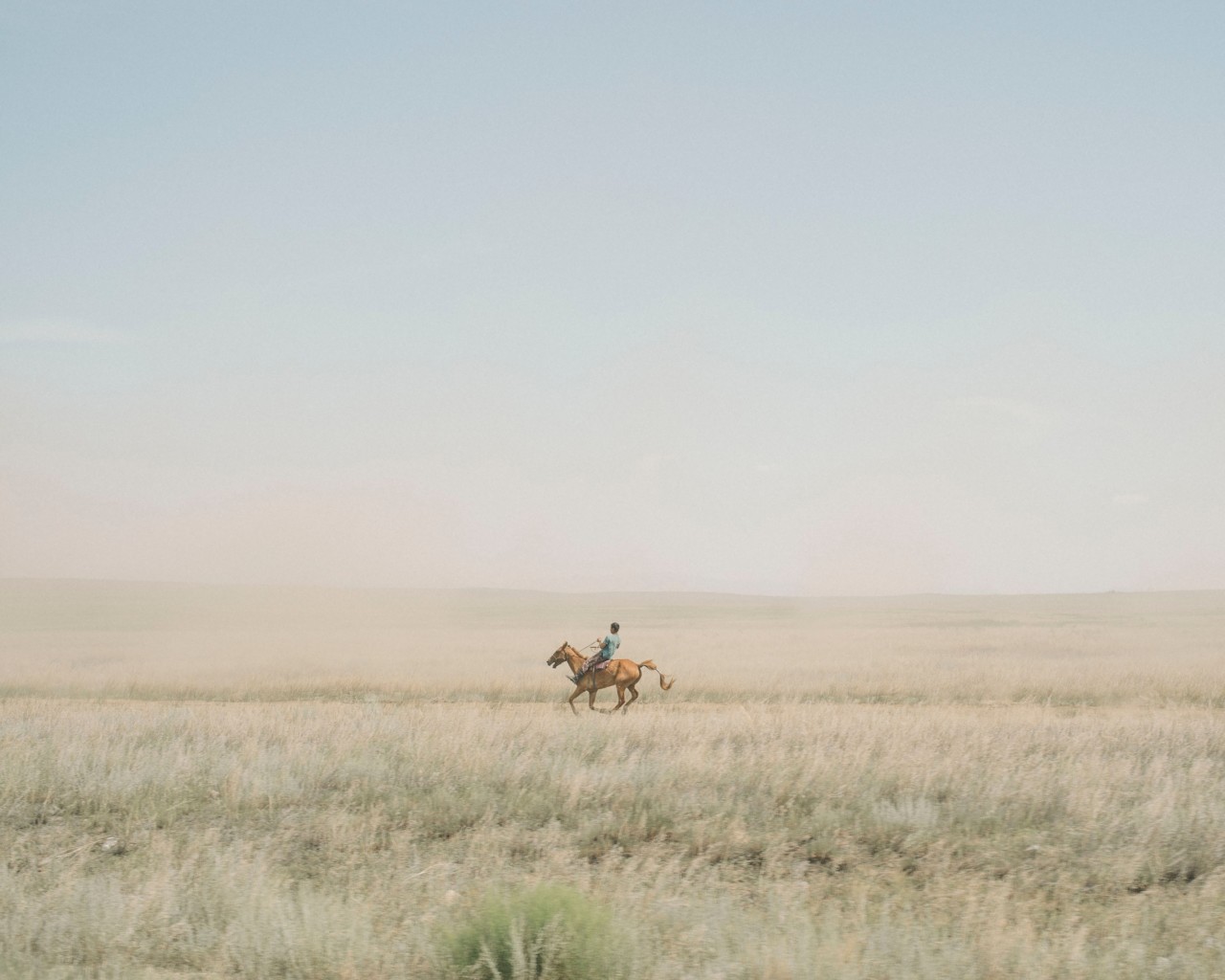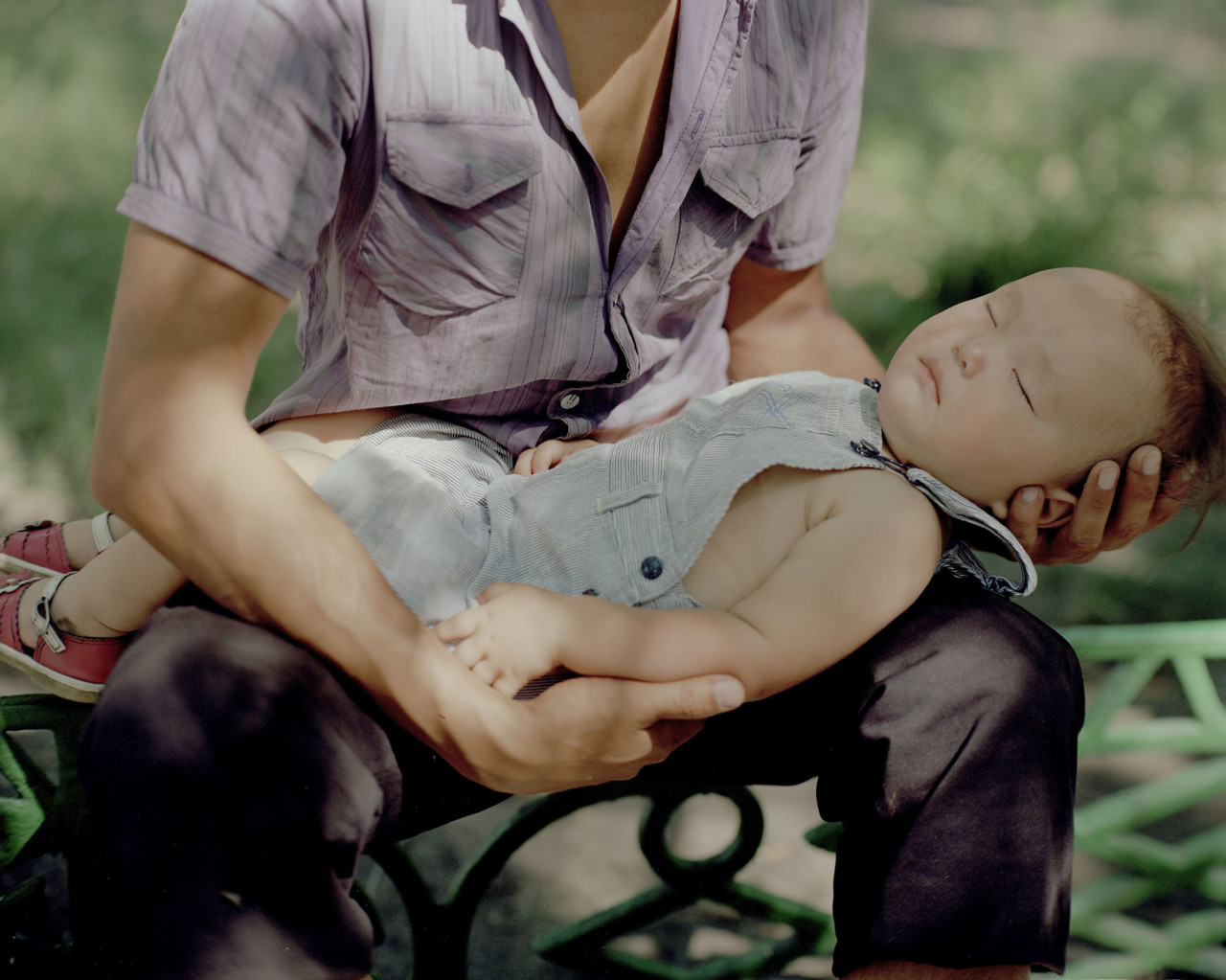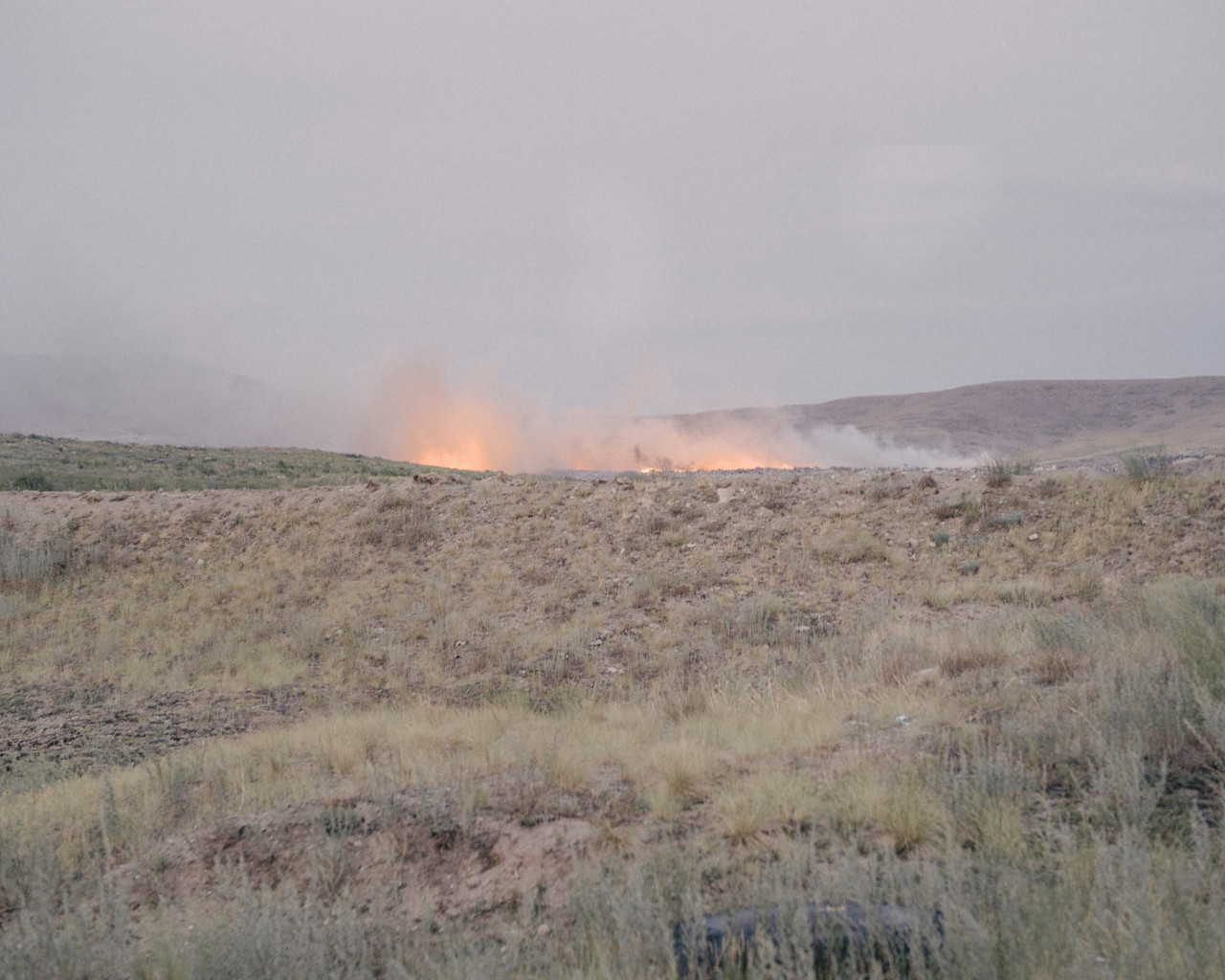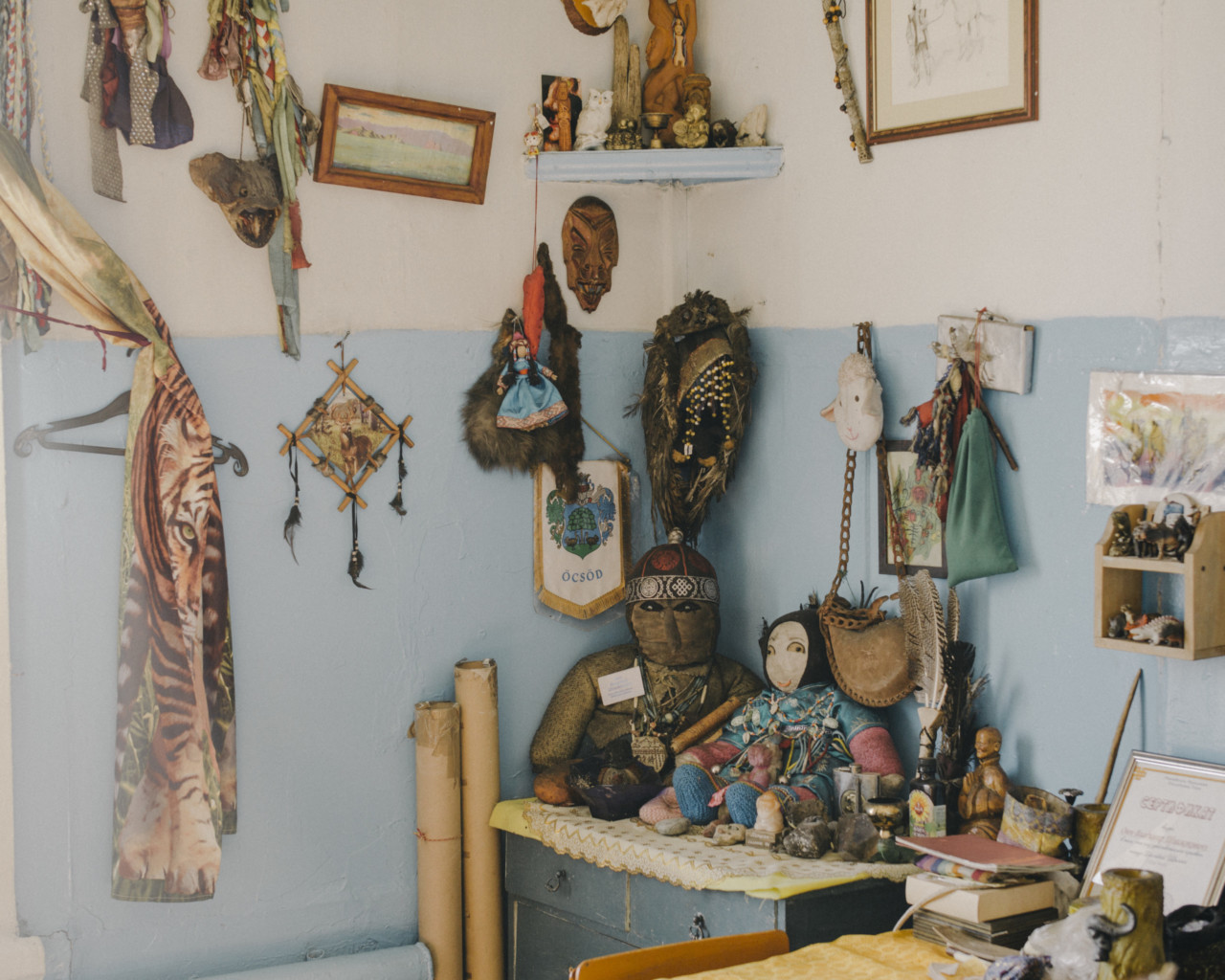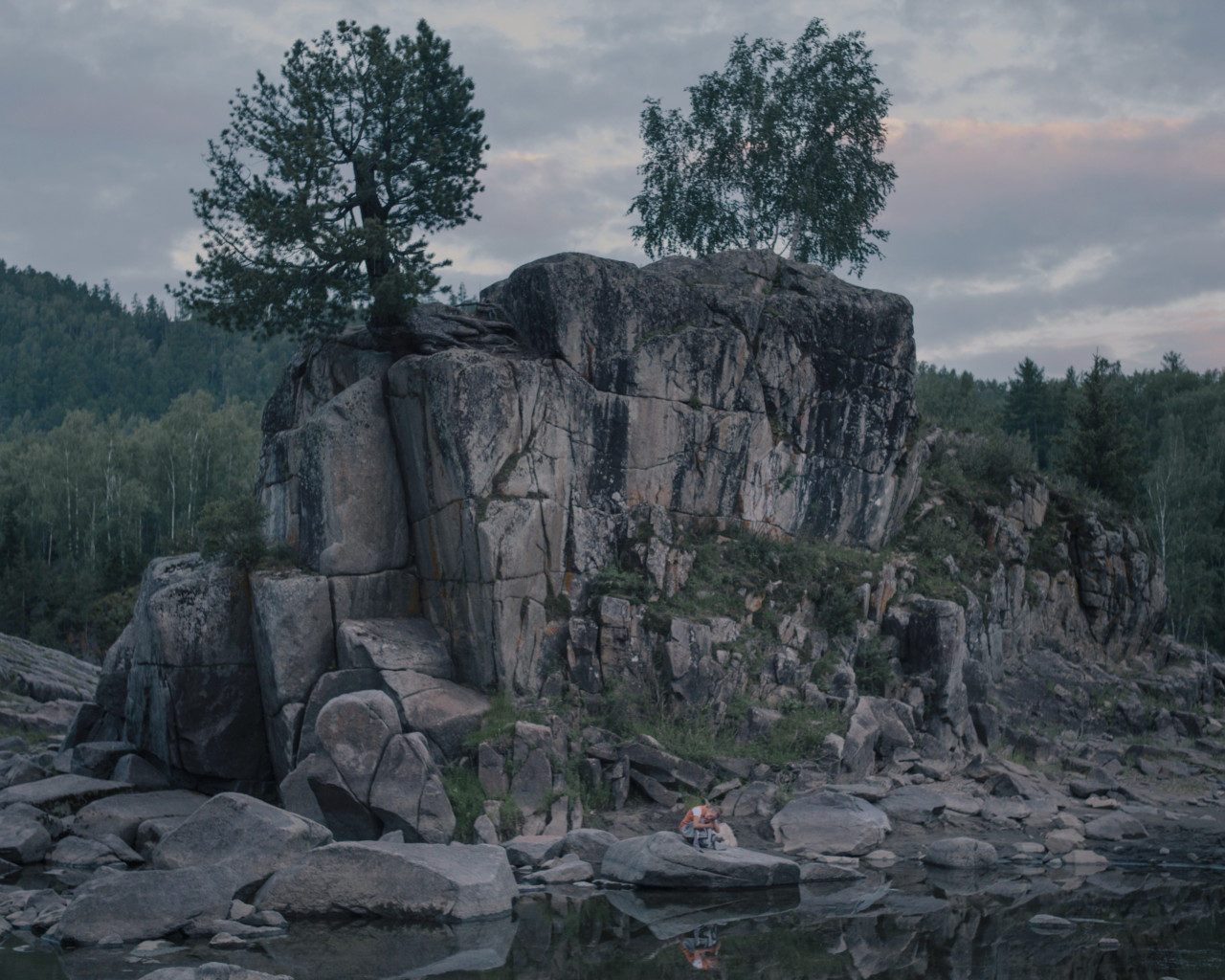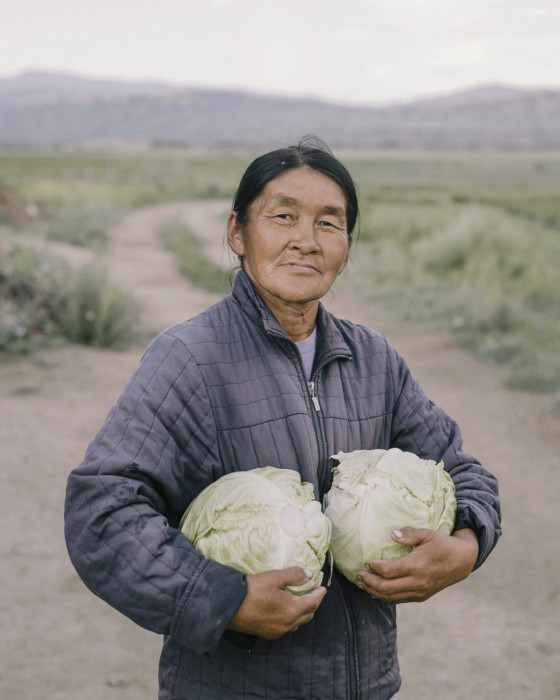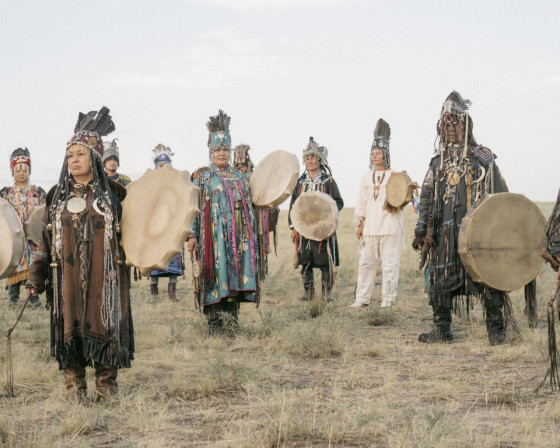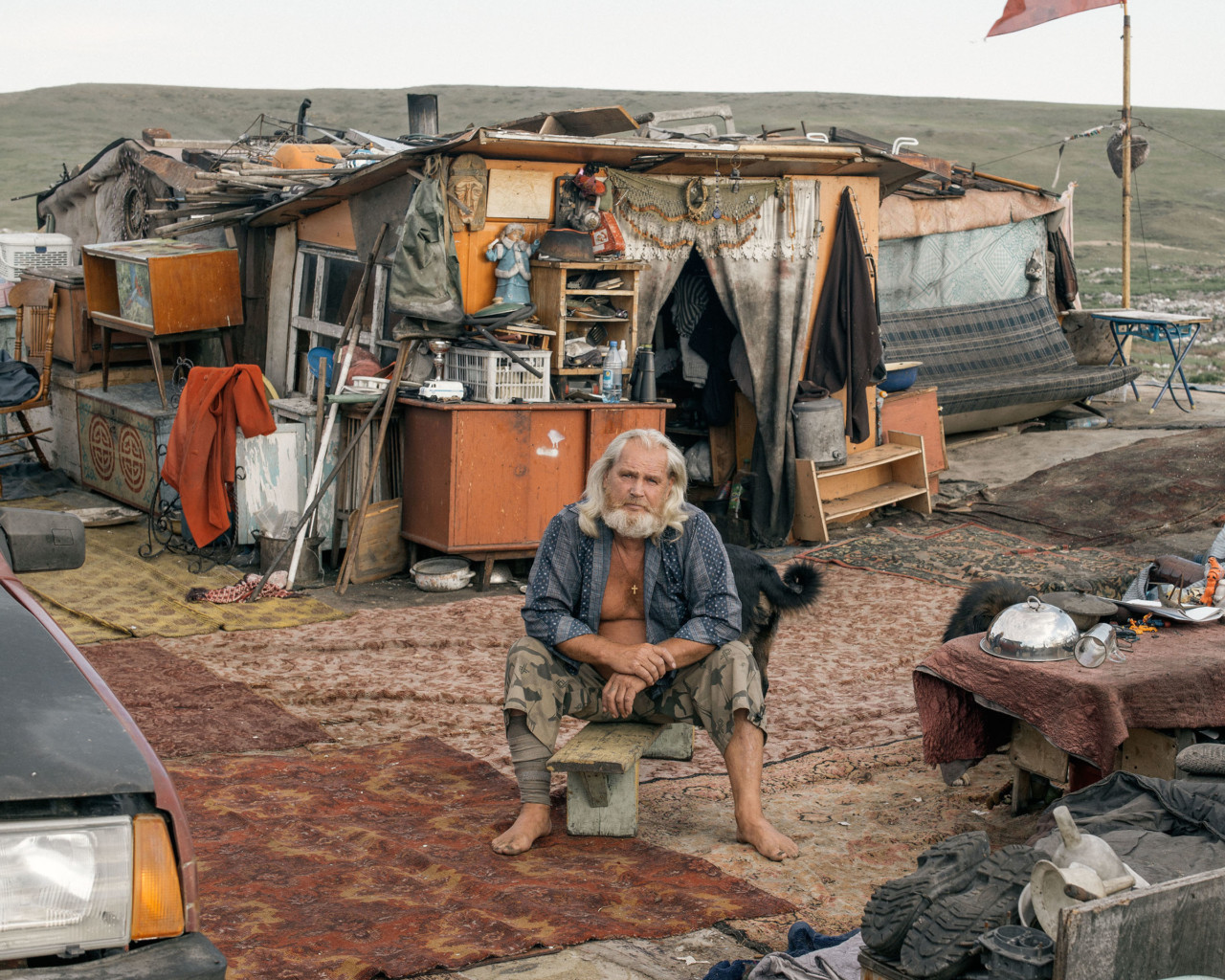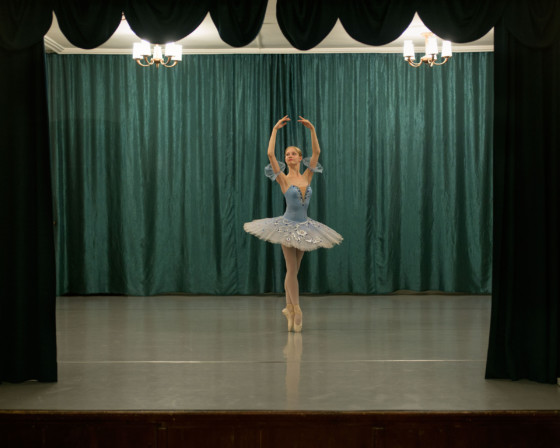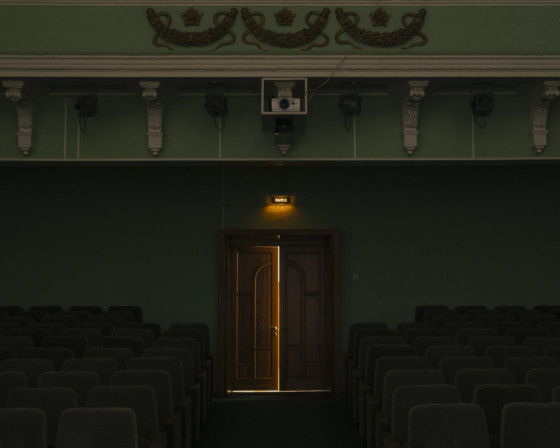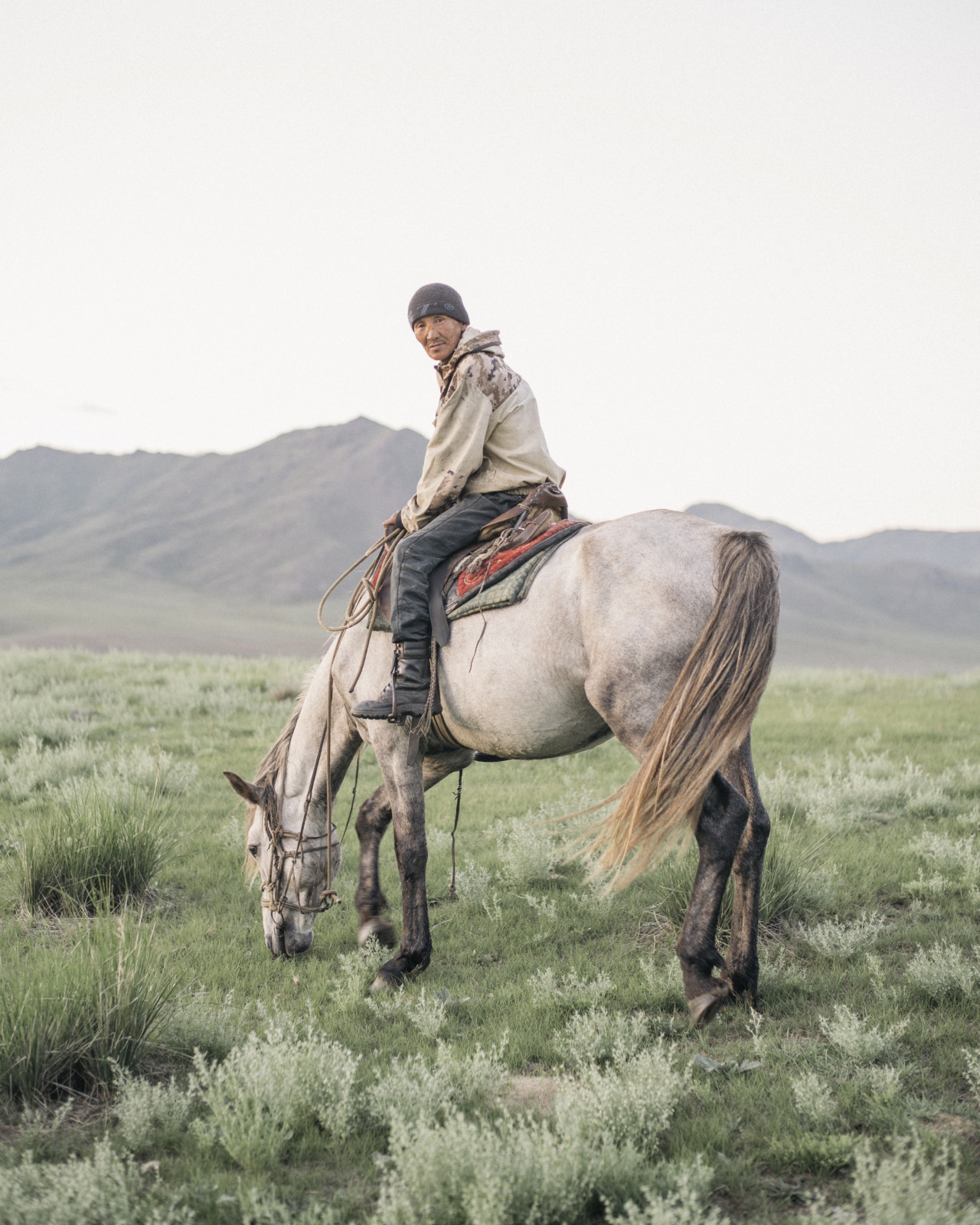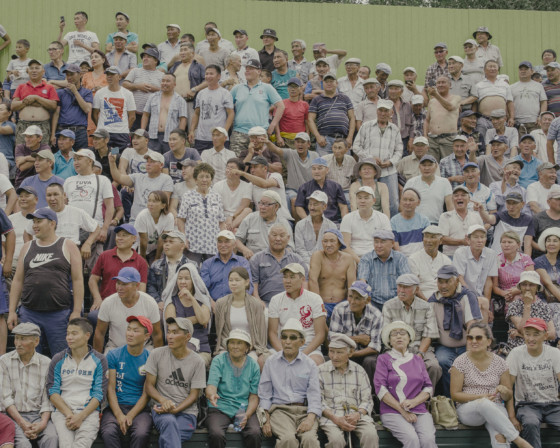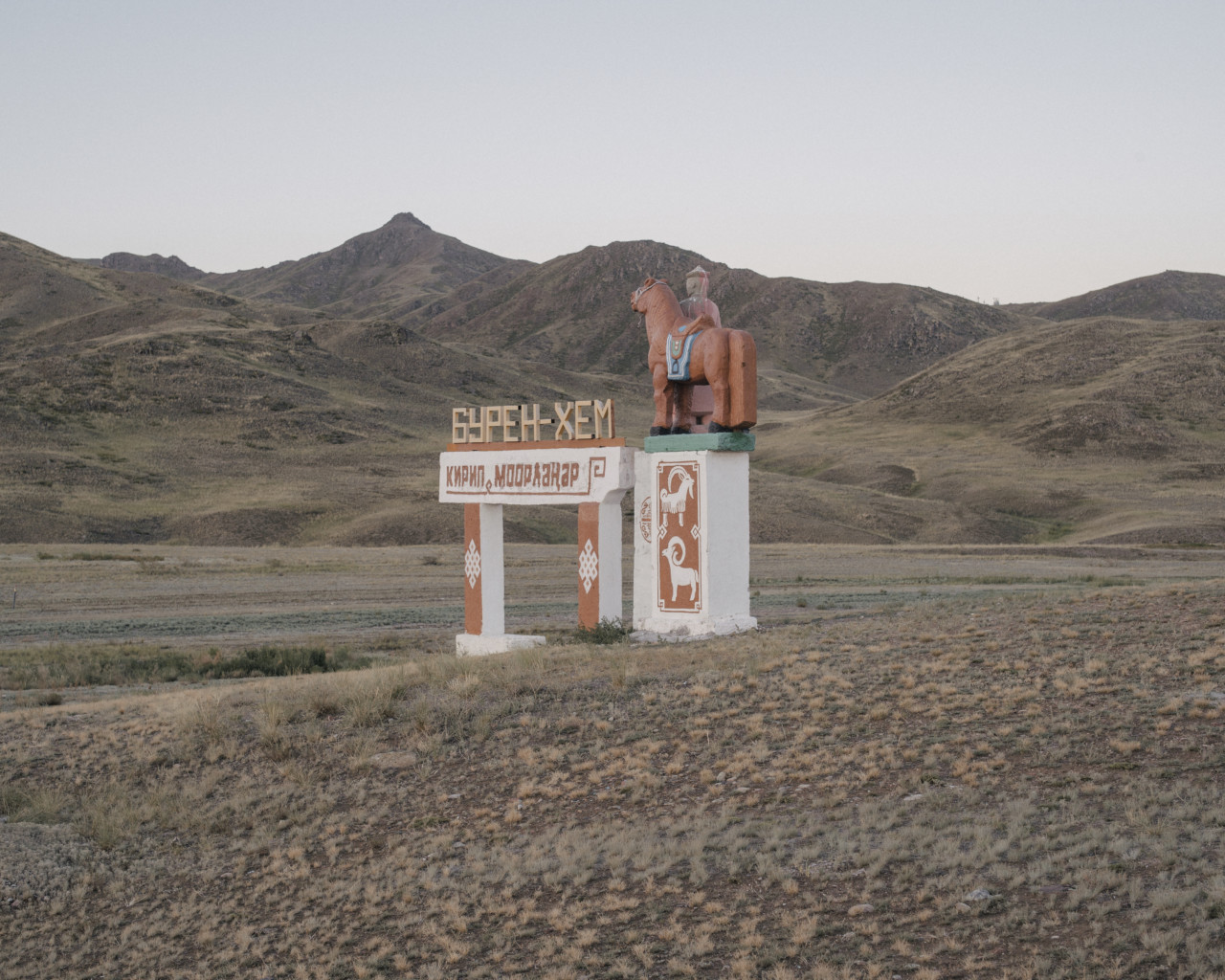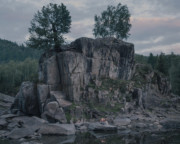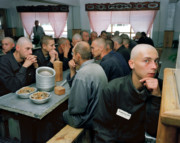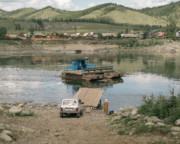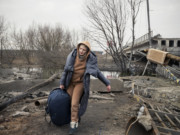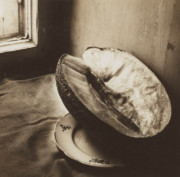Hiding from Baba Yaga
Nanna Heitmann’s ongoing exploration of the secluded world along the banks of the River Yenisei
The above image is included in the new Magnum Editions Posters collection, featuring contemporary works from 23 Magnum photographers. These posters are now available, in limited editions of 100 unsigned, and 50 signed priced at $100 and $150 respectively. Each poster is individually numbered with a unique Magnum Editions label that is supplied separately. You can explore the whole collection here.
“Vaselisa was running faster than she had ever run before. Soon she could hear the witch, Baba Yaga’s mortar bumping on the ground behind her. Desperately, she remembered the thin black cat’s words and threw the towel behind her on the ground. The towel grew bigger and bigger, and wetter and wetter, and soon a deep, broad river stood between the little girl and Baba Yaga. Vaselisa threw the comb behind her, and the comb grew bigger and bigger, and its teeth sprouted up into a thick forest, so thick that not even Baba Yaga could force her way through. And Baba Yaga the witch, the bony-legged one, gnashing her teeth and screaming with rage and disappointment, finally turned round and drove away back to her little hut on hen’s legs.”
– Baba Yaga and the Girl with the Kind Heart
For a long time, the banks of the Yenisei were dominated by nomadic peoples before the Russians, pushed westward by desire for valuable furs, who reached the river in 1607. Criminals, escaped serfs, apostates and adventurers joined together in wild rider associations which expanded deep into the vast, wild taiga, the subarctic forest. Old Believers, followers of the ritual practices of the pre-reform 17th Century Eastern Orthodox Church, settled on the lonely banks of the Yenisei to escape the persecution of the Tsar and later the Soviets. With Stalin’s rule, the Yenisei became a place of exile and forced labor. The Soviets suppressed not only the native peoples, but also the river itself – with two giant dams they created lakes of almost 400km length.
Nanna Heitmann’s ongoing project, Hiding From Baba Yaga, sees her traveling the lands through which the River Yenisei runs, fascinated by the remoteness and diversity of the region. The German-born Russian photographer spent much of her time in Tuva, the autonomous republic that lies in the southern part of Siberia, on the northwestern border of Mongolia. In 1944, the Republic of Tuva was formally incorporated into the Soviet Union. Today, Tuva is one of the poorest and most inaccessible regions of Russia and according to Rosstat, 40 percent of the population lived below the subsistence level in 2017. Here, we speak to Heitmann about the project’s evolution, western clichés, nationalism, ritual, and the slowly modernizing lives she finds along the river’s banks.
…listening not only to the splashes of the waves, the tumult of the wind, the rumble of the taiga, but also the unhurried stories of the people surrounding the bonfire…
(Victor Astafiev, Queen Fish, 1976)
The Yenisei travels 3,487 kilometres from Mongolia, through Siberia, into the Arctic Ocean. It is one of the longest rivers in the world. Just as the character of Ignativich did in Queen Fish, the searching tale of ecological disaster by the Siberian author Viktor Astafiev, Nanna Heitmann journeys along the river— and this summer, she will continue documenting and engaging with the isolated communities on its banks.
During the period of the Soviet Union, this region became a locus of exile and forced labor, with extensive dam-building and radioactive contamination affecting the natural ecosystems. With the collapse of Soviet rule, infrastructure in the area has further buckled and today many people in the region survive off the land, seemingly isolated from the rest of the world.
Heitmann’s project title, Hiding from Baba Yaga, is inspired by the famed Slavic witch who can smell out the Russian ‘spirit’ and occupies a mystical and ambiguous role in fairy tales, living in a home that stands on chicken feet without a door or windows. For Heitmann the tale echoes the stories and illustrations – whether those by Ivan Bilibin or Gennady Pavlishin – she saw as a child while reconnecting with her Russian roots. “Of course, the Yenisei river could be photographed totally differently. But I guess what I was specifically looking at was whether I could find some elements of these stories in modern society today.” The characters and settings we encounter in Heitmann’s work themselves conjure a dreamlike, melancholic fairy tale of isolation and independence. We sense the mythologizing of these fleeing, isolated peoples.
"The characters and settings we encounter in Heitmann’s work themselves conjure a dreamlike, melancholic fairy tale of isolation and independence."
-
Among these isolated groups the photographer encountered were the Old Believers, a subsect of the Russian Orthodox faith who turned against the 1652 reforms of the Patriarch Nikon. Many Old Believers fled to the most remote areas of Russia, including the secluded upper reaches of the Yenisei. More Old Believers started arriving in the Tuva region at the end of the 19th Century, escaping from the persecution at the hands first of the Tsar, then later of the Soviets. “The locals told me that they never knew how long they would be able to stay in one place for, before needing to find an even more remote place to hide,” explains Heitmann. “That is why their houses often look temporary and very simple when compared traditional old Russian homes.”
Along with many things regarded as the trappings of modern or Western influence by Old Believer communities – like bar codes, TVs, and receiving state pensions – being photographed has traditionally seen as a sin, but Heitmann’s work traces a developing openness even here. “After spending time with people alone, some become okay with being photographed. But mostly I photographed people that are themselves somewhat isolated within an already isolated community. Like Vaselisa, who shares her name with the girl from the fairytale. Her parents are both deaf and mute and the only ‘unbelievers’ in a village that lives strictly in accordance with centuries-old rituals.” Heitmann recalls another individual she met, a man of religious conviction who receives a state pension and endeavors to motivate other villagers to claim theirs, arguing that they have worked hard all their lives for them. Now, he has been excluded from the community’s prayer room and all religious ceremonies.
Other religions, like Buddhism, as well as shamanic practices native to some regions of the USSR, were persecuted under Soviet rule – this remote part of the land offered refuge to followers. “The traditional religions survived communism in Tuva better than most religions elsewhere in the Soviet Union and religious traditions remained a living element in the Tuvan national consciousness. Maybe because of its remoteness.”
While traveling in the Tuva Republic the photographer also met with, and photographed, shamans. “In villages, you still find shamans living on their own, whereas in capital city Kyzyl, there are a few associations that you can go to in order to sort out your problems – like the so-called shaman clinics, which I also photographed.” The photographer feels that the resurgence of shamanic rites and practices can be seen as an extension of growing nationalistic and pro-independence sentiments in the republics of the former USSR.
“After the Soviet Union it’s becoming part of the identity of the people again. And people really believe in it. Folkloric traditions and ceremonies are being revived and people whose ancestors were shamans are the only ones allowed to become shamans.”
"Folkloric traditions and ceremonies are being revived and people whose ancestors were shamans are the only ones allowed to become shamans."
- Nanna Heitmann
Other individuals encountered along the river reinforce the complex nature of isolation – geographic, communal, personal, spiritual. One, a former ballerina and now strip-tease dancer, Sofia, lives in a city. She is thus less isolated than many of those in far flung settlements, but as Heitmann evinces, “There are always some twists or different layers of isolation.” Sofia describes herself as a misanthrope forced by circumstance to interact constantly with people, an inconvenient reality hinted at in her disconnected gaze. Yuri, who Heitmann stayed with last summer was once a bus driver, but left the city. “I am a simple worker,” Yuri told Heitmann, “Nothing keeps me in the city. All my friends are in the cemetery. Drugs or alcohol.” He now lives in his small hut, built on a landfill site, where he cares for his 15 adopted dogs.
"We sense a transition point in the photographs, shifting perceptions resonate throughout the project and allow Heitmann to tackle - and engage with - Western clichés often reproduced in photographs of Russia."
-
There is a tension running through the work: communities intent on keeping memories and traditions alive, and on maintaining their sense of isolation in the face of encroaching influences of the West – glimpses of which flicker through Heitmann’s work. We sense a transition point in the photographs, shifting perceptions resonate throughout the project and allow Heitmann to tackle – and engage with – Western clichés often reproduced in photographs of Russia. “I think there is a perception of Russia – the KGB, all the movie stereotypes, Siberian people living with bears…” But Heitmann is showing us a Siberia in 113-degree heat, and some communities that live similarly to those in Western towns, albeit in the face of adversity in terms of climate and isolation. To some, her photographs are gloomy or melancholic, while to others they are a refreshingly positive and wistful depiction of Russia that is so often lacking in the narratives promoted both in Europe and Russia.
Heitmann’s photographs reverberate with chemistry and striking intimacy. “Sometimes I felt that if I, for example, [presented myself as] a photographer from Moscow, people would not let me photograph them. [Many] don’t like people from Moscow. I often tell them I don’t like Moscow either, and they would start opening up. Maybe sometimes it helps to be something kind of… in-between. Neither fully Russian nor fully foreign… I think that when you are a woman, by yourself, people are also immediately more open to you, either because I don’t look dangerous to them or because they are intrigued to have a young stranger so interested in their lives.”
Heitmann describes each photograph and each subject as a “different story”, explaining that the relationships she builds when convincing people of her interest in them vary greatly. “Many people object, saying that they are ugly. I say, ‘You are not ugly’, and explain what I see in these people and what turned my interest onto them. But of course, you also get turned down. The worst thing is so many interesting old women say no. Old men don’t see themselves as ugly or old. I think this is to do with the perception of how a woman should behave and old women usually are mad that I even ask.”
This summer, Heitmann is heading back to the Yenisei to further explore the northernmost area of the territory, continuing to trace the life that exists on the banks of the river. The expanse she plans to visit is even more isolated than those she has worked in to date, and only in the summer are the villages connected to larger society, by mail-ships or helicopters.
Heitmann intends to explore the anarchy that developed there after the collapse of the USSR, with the dissolution of jobs and infrastructure. Again, she will trace the isolation of the people, now also facing encroaching deforestation both from China in the East and from Russia in the West, as parcels of the forest surrounding them are sold off incessantly. “Already, in this isolated area, civilization is moving closer. People complain that the climate is changing, that the forest is disappearing.” The rapid changes in the microclimate, with the snow thicker in the winter and melting earlier in spring is disturbing local ecosystems as well as the hunting that the locals so depend on. But across this ever-changing expanse of land, just as in Astafiev’s description of the river-dwelling communities of Siberia, Heitmann traces the ‘laughter, chatter, complete understanding, and almost fraternity on the banks of the Yenisei’ in the face of seemingly extreme conditions.


